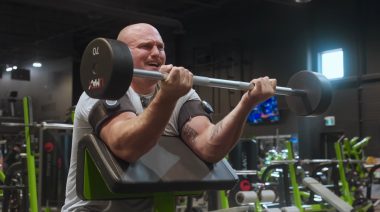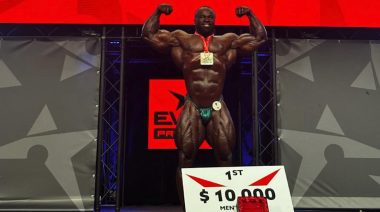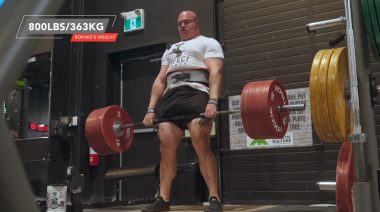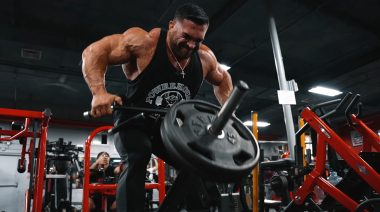“I’m chasing performance, not looks,” seemed to be the narrative from the Olympic weightlifting community for a while. There appeared to be no room for time spent on focused, strategic muscle building. I was a part of the community. I heard many say it. But I was always confused as to why functional bodybuilding and training for performance in a sport had to be mutually exclusive. It had never been for me, although I must admit, I’ve often mistakenly not kept it as a priority.
“I’m chasing performance, not looks,” seemed to be the narrative from the Olympic weightlifting community for a while. There appeared to be no room for time spent on focused, strategic muscle building. I was a part of the community. I heard many say it. But I was always confused as to why functional bodybuilding and training for performance in a sport had to be mutually exclusive. It had never been for me, although I must admit, I’ve often mistakenly not kept it as a priority.
My Erratic Road
When I first started lifting weights, I intended to build as much muscle as possible. At that time, there didn’t seem like there was anything else at which to aim. Bodybuilding workouts were all anyone knew or did. Yeah, we all wanted to be strong, but if you focused on building muscle, strength would, of course, come as a byproduct.
So my friends and I trained every body part individually with every possible exercise variation. Was it ridiculous and unnecessary? Sure it was, but we did build muscle, and we did get stronger. And while we didn’t understand what we were doing, we were making a base of training.
Although my weight training focused just on building muscle rather than explosive or maximal strength training, the more bodybuilding training I did, the better I felt when I participated in performance-based sports. Even exploring boxing and Olympic weightlifting seemed to benefit from this early training.
Then, I started powerlifting competitively. By then, I had already built a decent amount of muscle, but it wasn’t enough to perform how I wanted in this sport. Back then, the conversation of powerlifting prowess was synonymous with maximizing leverages. So for me, a somewhat taller, lankier type lifter, I understood that I had to get as big as possible. And big meant big by any means, not muscular.
So, I Ate
So, I ate. I ate a considerable amount, and I ate whatever foods had the most calories in them, which usually meant it had some grease in it that isn’t wholly biodegradable. I was still building muscle, but not in the appropriate ration to my total weight gain. In my mind, weight was weight, and it didn’t matter what kind it was.
Increasing the general mass that I could put behind lifting weights worked for a while until it didn’t anymore. I became too convinced that my overall size was enough to keep lifting heavier weights. I stopped doing many of the exercises that I knew had always put and kept muscle where I needed it.
Sure I was lifting some significant weight, but my training eventually became almost exclusively focused on stressing the significant powerlifting movements and variations without any room for body part exercises in areas that needed more muscle and general movement to prevent injury and improve function.
Handling the heavy-weight in the competitive movements, especially as frequently and as hard as I did, undoubtedly ensures the body is still very muscular. But most people won’t build muscle in equal proportion except for some elite lifters. That lack of bodybuilding work for me was a significant contributor to the stagnation and injuries I sustained that nagged me for a very long time.
Down a Bad Road
After I stopped competitive powerlifting and shifted back to Olympic weightlifting, I very intentionally shed most of the weight that I had built. I got leaner to be sure, but once again, I didn’t set out with a strategic plan, including focused bodybuilding work into my training.
I dropped just about one hundred pounds of body weight in a little over a year. And although I looked pretty lean and muscular at first, I didn’t retain as much muscle as I should have because of how quickly I took the weight off. I went to work training movements that I had not been practicing with similar intensity and frequency that I had been dedicating to powerlifting.
The problem was that the snatch and clean and jerk are not easy movements. I was doing them very inefficiently and so putting much more stress on my joints than I should have been. I was not only stiff from being such a big powerlifter for so long, but I was also using some of the leftover general strength that remained to pull heavier weights than my technique could support without causing harm to my body. I also didn’t have the mass behind me anymore to protect from training in such a stressful manner. So, I got hurt, and it lasted a while.
I did some self-rehabilitation and changed up training a bit, but the injuries kept up, and my body still hadn’t built up the elasticity and resilience specific to Olympic weightlifting. And yet I continued to focus my training just on the lifts themselves without an intelligent plan on how to incorporate bodybuilding work.
One day, I looked at myself and realized I was just skinny-fat, as the kids say. A lightbulb turned on. What if I just tried to build up the areas that I know get beat to hell in weightlifting training? And so I thought up a plan and executed it.
Nine months to a year after that, my shoulders, knees, and back, had all been injured at some point, felt better. I had a noticeably better physique, and as my weightlifting technique improved my soft tissues were even more prepared for the work because there was muscle to support. These were revolutionary ideas to be sure.
What Kind of Bodybuilding?
While coaches shy away from using the B-word with their clients who come to them for health or sports performance, I’d instead like to change the thoughts that come to mind. We are building the body up, and it should be thought of like this rather than labeling the work accessory and dismissing it as something that isn’t necessarily needed. Our minds shouldn’t immediately go to the thought of a muscle-bound guy in his twenties who would hurt himself if he swung a golf club when bodybuilding is brought up.
Bodybuilding work can be therapeutic, help aid in recovery, and used as a means to increase mobility, not limit it. There is no such thing as accidentally becoming muscle-bound. It is very, very hard to gain even a few pounds of pure muscle mass. If you think you gain muscle quickly, you’re mistaking weight change to corresponding increases in muscle.
Giving you the benefit of the doubt and assuming you’re not overeating, which you probably are because everyone who says they gain muscle too quickly usually is when they increase volume of weight training, you may just be retaining fluid during the initial phase of hypertrophy which can be eliminated later if you don’t abandon ship.
What we should be discussing is not if more focused bodybuilding is for you or not, because it is, but instead what areas need to be built up to see your success. Maybe having a day dedicated toward making your arms bigger won’t directly improve your overhead position for a snatch, but building muscle on your rear delts and upper back, both of which directly support a barbell actively overhead, definitely will.
So what are the most critical areas to build up for Olympic weightlifting, and what are the exercises to get the most benefit? No one has time to do four extra bodybuilding exercises a day. Instead, let’s pick the three most important areas to build up and pick two exercises with the most significant benefit.
1. Upper Back
Having a strong upper-back is a prerequisite for keeping a globally extended spine and supporting weight overhead. Without this capacity, the snatch or clean and jerk cannot be done correctly– Cut and dry.
2. Posterior Chain
Building up the glutes and hamstrings, and I mean building up muscle, not only just doing low-level activation drills helps protect the knees, hips, and lower back.
3. Shoulders
Here we’re talking specifically middle and rear delt. Olympic weightlifting will stress the front of the joint with all of the overhead work, but the middle and rear delt need some love to stabilize the shoulder and protect from injury.
Jesse competes in the sport of Olympic weightlifting, and he was also formerly a competitive powerlifter. He was featured in Main Strength and fitness publications. You can read more of his work on his website.






